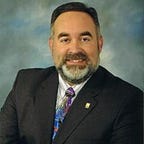Do You Hear What I Hear
Digital Audio Storage Formats
While working at Bell Laboratories in 1948, Claude Shannon, John Pierce, and Bernard Oliver developed a method for high-speed digital transmission of multiple phone conversations over the same set of wires. It represents a fundamental breakthrough that today we consider to be at the foundation of data acquisition. The technique involves the conversion of a varying analog signal (e.g. a voice conversation) to a stream of digital numbers through the use of an analog-to-digital converter (ADC). Known as Pulse Code Modulation (PCM), the term “pulse” implies the discrete sampling of the continuous signal at a regular interval, “code” refers to the binary value representing the sample’s instantaneous amplitude, and “modulation” conveys the notion of a varying signal. Harry Nyquist at Bell Labs had explored analog-to-digital conversion of modulated analog signals during the 1920’s, but it wasn’t until the invention of the transistor in 1947 (you guessed it, also at Bell Labs) that PCM was commercially feasible.
Thirty-four years later, in 1982, Philips Electronics N.V. and Sony Corporation introduced a music storage and playback medium known as Compact Disk Audio (CD-Audio). The CD-Audio standard that we still use today is based on 16-bit PCM that has been sampled at 44.1 KHz. The well-known Nyquist sampling principle dictates that any frequency must be sampled at least twice per one cycle in order to be digitized and returned back to its original form using a digital-to-analog converter (DAC). The typical audio range of the human ear is 20 Hz to 20 kHz, so a 44.1 kHz data acquisition rate is adequate to reproduce these frequencies. Nyquist’s research also showed that frequencies that where not sampled at least twice per cycle appeared as ghost or “alias” signals below half the sampling frequency (designated the “Nyquist frequency”). Input signals having frequencies greater than the Nyquist frequency must be filtered or they will materialize as noise and distortion in the acquired signal. Therefore, the CD-Audio PCM recording circuitry must include a frequency cutoff filter (or “anti-aliasing filter”) at 22.05 kHz. Unfortunately a perfect anti-aliasing filter is not attainable using current technology. Signal frequencies just below 22 kHz are removed along with the ones above the Nyquist frequency to the disappointment of many audiophiles.
Although the 16-bit, 44.1 kHz PCM CD-Audio format strained the technology available in the early 1980’s, digital technology has improved dramatically over the last 20 years. Recording studios routinely use 24-bit ADC equipment for master recordings that sample at 88.2 kHz or higher. This data is converted down to the standard 16-bit, 44.1 kHz PCM format using what are known as “decimation filters”. Concurrently, in an attempt to increase the sound quality of CD-Audio players by decreasing digitization noise, equipment manufacturers smooth the 16-bit PCM data by interpolating between amplitude digitization levels. The addition of decimation and interpolation steps not only increases the cost and complexity of recording and playback equipment, but also introduces noise into the reproduced audio signal.
Philips and Sony have recently teamed up again to create a radically different audio storage format that addresses many of the shortcomings of their original CD-Audio specification. Known as Super Audio Compact Disk Audio (SACD-Audio), this format records and replays frequencies from DC — 100 kHz (compared to 5–20 kHz for CD-Audio) and has a dynamic range of 120 dB (compared to 96 dB for CD-Audio). These benchmarks are attained by switching from PCM to a process known as Direct Stream Digital (DSD). A 1-bit Sigma-Delta ADC operating at 2.8224 MHz has replaced the multi-bit ADC used in the PCM recorder. Instead of decimating the output of the Sigma-Delta ADC down to the 16-bit, 44.1 kHz PCM data required by CD-Audio players, SACD-Audio players read the native 1-bit Sigma-Delta data and feed it into the DSD DAC by way of a simple low pass filter. The 2.8224 MHz DSD sampling rate is 64 times that of CD-Audio (64 x 44.1 kHz) providing a reduction in sampling noise. Since each successive sample is represented by 1-bit, this increase in sampling rate only requires four times the storage space per channel used by CD-Audio. A 2-channel CD-Audio disk stores 780 MB of information. The SACD-Audio stores 6 channels of DC — 100 kHz digitized audio signals in 4.7 GB of storage space — an amount facilitated by increases in optical digital storage technology.
In order to avoid the obsolescence of the CD-Audio format and the millions of CD-Audio players in the field, the SACD-Audio is placed on a multi-layer disk containing a complete CD-Audio version of the music in one layer and the SACD-Audio version in a second layer. The SACD-Audio layer is transparent to the 780-nm diode lasers used in CD-Audio players while it is fully reflective to the 650-nm diode lasers used to read the SACD information. At the moment, the SACD players can cost as much as 30 times the price of their CD-Audio cousins. So you better be super, extra nice if you want to find one under your tree.
This material originally appeared as a Contributed Editorial in Scientific Computing and Instrumentation 18:1 December 2000, pg. 14.
William L. Weaver is an Associate Professor in the Department of Integrated Science, Business, and Technology at La Salle University in Philadelphia, PA USA. He holds a B.S. Degree with Double Majors in Chemistry and Physics and earned his Ph.D. in Analytical Chemistry with expertise in Ultrafast LASER Spectroscopy. He teaches, writes, and speaks on the application of Systems Thinking to the development of New Products and Innovation.
